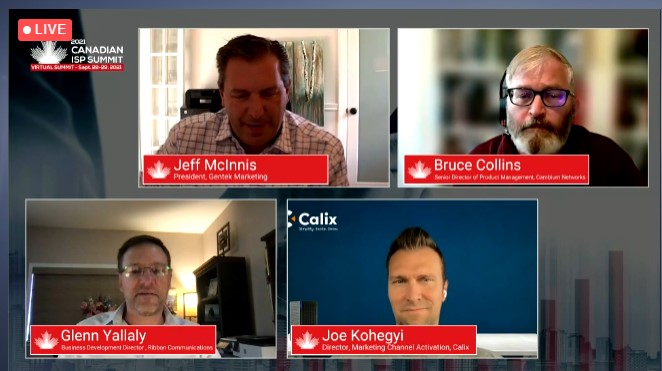
Tech panel talks approaches to addressing gap in coverage in rural and remote areas
By Lynn Greiner
TORONTO – High speed Internet access is a necessity for Canadians, regardless of where they live, yet there is a huge connectivity gap in rural and remote areas.
In a technology panel at the ISP Summit, Building out Rural Broadband – FWA, Fibre and the In-Home Experience, moderator Jeff McInnis, president of Gentek Marketing, asked three thought leaders whose companies are working to address the gap in various ways to discuss their approaches to the problem, and the challenges they are facing.
“Canada’s economy is one of the strongest globally, with thriving city centers and growth and innovative tech businesses across the country doing well,” he noted.
“Much less talked about is the fact that 30% of our economy is represented by rural and remote areas, and industries and businesses all rely on having access to high speed. It’s clear that these communities require high speed connectivity to succeed in their endeavors. In fact, only 46% of Canadian rural households have access to high-speed Internet, defined as 50 meg down one meg up, compared to 87% in our urban centers. Remote communities have stated time and time again that access to affordable high-speed Internet is the number one challenge impeding their economic development.”
That said, he asked panelist Bruce Collins, senior director of product management at Cambium Networks, about the role of fixed wireless in servicing rural communities.
Demand during the pandemic has ramped up significantly, Collins said, with user requirements going from basic 25, 50, or 100 megabits per second (which are now table stakes) to 250 or 500 Mbps, or even one gigabit per second service to the home. He is excited about the 60 gigahertz unlicensed spectrum, which will offer Gbps service and can be deployed in both urban and rural areas. Plus, he noted, the cost of licensed microwave has come down, which opens more new opportunities.
McInnis then turned to Glenn Yallay, director of xHaul strategy and business development for North America at Ribbon Communications to get some insight on why rural broadband designs are beginning to include an all IP/MPLS DWDM transport layer to the metro network.
Yallay said that it comes down to inflection points, when the pull of demand and the push of technology for the same thing – a more cost-effective high value solution for interconnecting multi-service access devices – are equal. Operators can leverage their fibre assets, licensed and unlicensed spectrum to expand their reach.
“A transport layer can and must preserve investments that operators have made previously in their multi-service access devices, but also reduce the complexity and cost of future purchases,” he said.
However, McInnis observed, it all comes down to subscriber experience. He asked Joe Kohegyi, director of marketing channel activation at Calix to describe what is being done to help operators of these rural networks.
Kohegyi said that leveraging real-time data and analytics to do subscriber behavioural analysis helps service providers with their customer retention and subscriber acquisition activities. And, he added, since the subscriber thinks their Internet is the Wi-Fi, and their Wi-Fi is the Internet and the two shall never be separated, he thinks great home Wi-Fi is critical, noting that Wi-Fi 6 makes all other Wi-Fi better.



